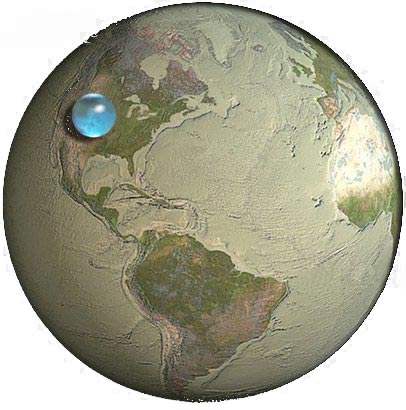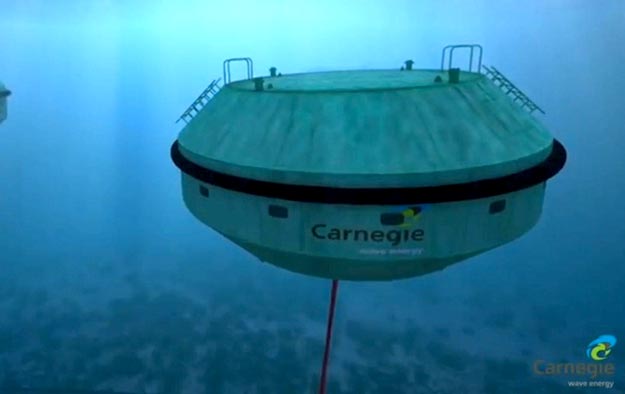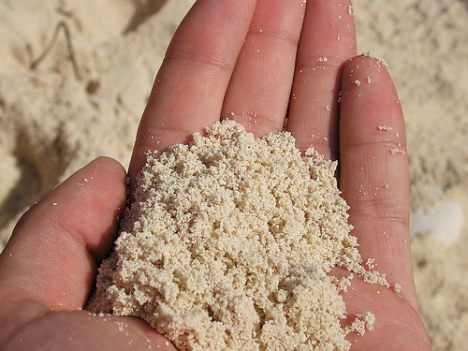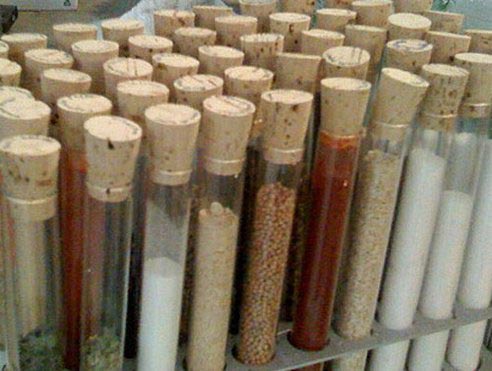While it looks like the planet’s surface is covered mostly in water, the fact is there is very little water on this planet when you compare it to the size of the planet as a whole. The USGS created this image to give us a little perspective.  USGS states, “About 70 percent of the Earth’s surface is water-covered, and the oceans hold about 96.5 percent of all Earth’s water. But water also exists in the air as water vapor, in rivers and lakes, in icecaps and glaciers, in the ground as soil moisture and in aquifers, and even in you and your dog. Read more
USGS states, “About 70 percent of the Earth’s surface is water-covered, and the oceans hold about 96.5 percent of all Earth’s water. But water also exists in the air as water vapor, in rivers and lakes, in icecaps and glaciers, in the ground as soil moisture and in aquifers, and even in you and your dog. Read more
Archive for Article
If You Put All Earth’s Water In One Place, It’d Look Like This
Cactus needles inspire new method of cleaning oil from water
Tiny spikes of copper, inspired by cactus thorns, have the ability to remove micro-droplets of oil in water, according to Chinese researchers, and could lead to more effective cleanups of oil spills.
The researchers, who noted that the cone-shaped spines of cactus can harvest water from the air and move it to their base due to surface tension and the shape of the spines, emulated that natural design function in a new development using artificial spines made from copper.
Although some advances have been made in oil clean-up technology, the tiny micron-sized droplets of oil remain difficult to remove, and this recent breakthrough could address that issue. Read more
Wave Energy technology produces both clean water and clean energy
Instead of generating electricity at sea and sending it to shore, a different kind of wave energy device is in the works in Australia, and it promises to deliver not only emissions-free electricity, but also emissions-free desalinated water.
The technology, called CETO after a Greek sea goddess, is being developed by Carnegie Wave Energy Limited, and their upcoming 2MW pilot project near the Perth Wave Energy demo site will be the first wave powered desalination plant in world. Read more
“Super Sand” Cleans Dirty Drinking Water with Graphite Waste
Billions of people lack access to clean drinking water and researchers are constantly searching for cost-effective ways to purify water for rural villages and developing areas. A team of researchers has come up with just such a possible solution using “super sand,” or sand coated in an oxide of graphite.
Using sand to purify water is already an old strategy, but researchers from Rice University in Texas think that by coating it with graphite, the “super sand” will purify water more quickly and effectively than ever before. The BBC reports that coarse sand doesn’t purify as well as fine sand, but fine sand purifies very slowly as water percolates through. The new process could harness the best qualities of both. Read more
Common Kitchen Ingredient Helps Clean Drinking Water
Solar water disinfection (SODIS) relies on the freely available ultraviolet and infrared rays of the sun, which can disinfect by killing pathogens that contaminate water. The process is as easy as leaving a clear plastic bottle of water out in the sun for six hours.
If clean water is that easy, why are so many people, especially young children, dying from diseases contracted by drinking unclean water? There is a major obstacle to effective use of SODIS: if the water is muddy or murky, pathogens can hide in the shadows of the particulates, avoiding the death-rays of the sun. Read more





